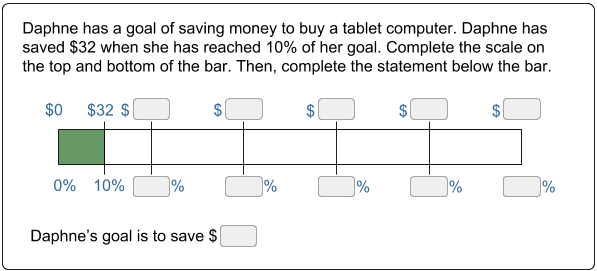Easier Said than Done
As math educators, we have a definition for a number line floating around in our heads. So, for the heck of it, write down that definition. Then, keep reading.

Next, you might want to Google “definition of a number line” and see what comes up. Go and read four or five different definitions. What do you notice? Yeah, nobody’s definition is the same!
Looking through the various results, you will recognize that the definition changes based on the intended audience of the page that you are viewing. For example, Merriam-Webster gives two definitions, one formal definition, which is pretty good for a high school math class, and one for “Students” which is almost useless. Webster’s New World College Dictionary gives a completely different definition, and that definition has significant mathematical issues. The American Heritage Dictionary of the English Language also has a good definition for high school students.
The definitions get worse when you look at free math websites. On one site, which will remain nameless, the definition states that numbers are placed in the “correct position” on a line, with no details on how the correct position is determined. The video on that site does a much better job because it uses a measurement strategy to build a number line representation. Unfortunately, in an attempt to use a tool that is familiar to students, Legos, the video misrepresents two important number line characteristics, tick marks and the intervals between them. More specifically, the thickness of each tick mark in the video is equal to the space between each set of tick marks. This confuses an otherwise valuable demonstration of a measurement strategy.
So why does any of this matter?
My first point is that coming up with a good definition of a number line is hard and that a good definition has to be appropriate for the grade level that you are teaching.
My second point is that a good definition for younger students requires a clear description or demonstration of how distances are measured on a number line.
Expanding on this last point, even good definitions for number lines are rendered meaningless unless a student has a proficient understanding of the basic measurement strategy, which was investigated in previous posts. The idea that a particular distance on a number line corresponds to a particular value is essential to making sense of how number lines work. That’s why this blog spent three posts investigating this fundamental concept.
If we take into account the fact that a fair number of students in grade 3 and above are weak, at best, with measurement strategies, there is a high likelihood that the definitions that we give and the number line problems that we offer in math class are going right over some students’ heads. Students can memorize a definition till they can say it in their sleep, but if they do not understand and cannot apply the basic measurement strategy, any definition of a number line is pretty useless. For these students, number line definitions end up sounding like what Charlie Brown’s teacher says, “Wah wa-waah, wah … .”
Characteristics of Number Lines
Instead of coming up with a one or two sentence definition, I’m inclined to list the set of characteristics that define a number line. This approach has the benefit of emphasizing the critical concepts and conventions that go into understanding this common representation. It also allows math educators to introduce refinements to the definition as students knowledge of number types expands to fractions, decimals, integers, rational numbers, and irrational numbers (and, for you high school folks, real and imaginary numbers).
The two lists below lay out the characteristics of number lines with whole numbers for grade 3 and above. Note that the lists are currently written for teachers. Based on feedback from readers, I will refine this list so that it is also appropriate for students.
Concepts – Number Lines with Whole Numbers
- Each number line has a scale (whether it is shown or not) that is used to measure distance on that line.
- The value of a point (representing a whole number) on a number line is the measured distance between zero and that point.
- The measured distance between two points on a number line is the difference of the two numbers represented by the points.
- A measured distance on one part of a number line represents the same value if it is moved to some other place on that number line.
- Number lines that do not include a point for zero can be extended to the left to include zero.
- The scales on different number lines can be the same or different. If the scales on two number lines are the same, measurements on one line can be used as measurements on the other line.
Conventions – Number Line with Whole Numbers
- Whole number values increase from left to right on a number line.
- Tick marks on number lines are labeled just like points (they represent the distance from 0).
- Tick marks are often used to mark off equal distances on a number line.
- The distance between points is measured from the center of each point.
When you look at all the concepts and conventions that go into a basic number line for whole numbers, it becomes clear that students need lots of opportunities to build, extend, and label these diagrams. It’s also not surprising that many students struggle with these representations precisely because their work with them has been so superficial.








